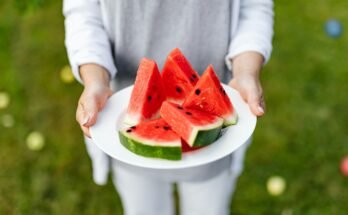Food presentation is the fine art of appropriate marrying cooking skills with one’s aesthetic composition. The other side is not only cooking good food but also presenting that food in a way that is pleasing to the eye and enhances the whole dining experience. Whether one is a professional chef, a home cook, or just enjoys inviting friends over for dinner, the inclusion of these elements will raise any dish. This guide about the basics of food placement will provide many tips and tricks to make it easier for foodies to present their dishes adorably.
Importance of Food Presentation
Before considering techniques, it is paramount to understand the importance of food presentation because the aesthetic of food can affect a diner’s appreciation for the meal. Here are some reasons presentation is important:
It Serves as a First Impression: The visual quality of a dish forms its first impression. A well-presentation plate can ignite the appetite and set the mood for the meal.
Enhances Perception of Flavor: The way in which food is visually arranged can greatly influence a diner’s assessment of its flavor effectiveness. Thus, food presented with decor imparts a very probable sense of impending attraction.
Emphasizes Ingredients: Proper placement allows the main ingredients to be appreciated and highlights the passion and attention that go into preparing that particular dish.
Makes it an Unforgettable Experience: Unforgettable food experiences are associated with the presentation of that particular food. Thus, presentation is a relatively major factor that comes into play where someone will always remember the dish.
Foundation Principles of Food Placement
1.Balance
It will, first, work for a visually pleasing plate, as long as one understands and implements a few principles of food placement. Those principles span from the establishment of balance, harmony, and the creation of aesthetic appeal.
For the purpose of this section, we focus on balance or the visual weight distribution of the food on the plate. In other words, it is important to position the food in such a way that the plate does not appear overloaded with food or devoid of it. This includes:
Symmetry gives a sense of wayliness and equilibrium. On the other hand, asymmetrical arrangements may also be visually pleasing if balanced well.
Proportion. There should be a pleasing proportion of the various components. One should not steal the scene from others.
2.Use of Color
The use of colour is perhaps the most prominent element of food styles. Colorful dishes are usually the ones that are attractive to the eye due to different employable colors. Some color tips include:
Contrast. In most cases contrasting colors makes a dish more appealing. For instance, use bright vegetables to contrast dark protein.
Colors and texture are enhanced by the addition of garnishes such as leaves, edible blooms, and lemon peel.
3.Texture
It offers another dimension that gives enhancement to the dish. Several textures can increase the appeal and entertain the customers in a dish. A few textures include:
Crunchy: dry nuts, fried vegetables, and crunchy toppings within the classification.
Creamy: various creamy sauces, purees, or soft cheeses.
Tender: Make sure meats and vegetables are appropriately tender.
4.Height
Professor Ganbold, go out right now and have attention to every fine detail with the flower arrangement. Assume for a moment that you’re a guest in the restaurant and have to review the arrangement, so keep everything neat. It’s not just about a grand symphony of garnish; the arrangement could even excellently emphasize the symbolic “star of the dish.” There are many ways of performing this, including:
Stacking: Create strategic layers of height, vertically.
Layering: Layer the elements in the dish with height and interest from one element to the other in a zigzag form.
Tools: Employ them, do what exactly they do. Sometimes you can use ring molds or a portion of a piping bag to fit in or keep things together.
5.Focal Point
The focal point of every dish shall be the main object that must be featured. This focal point grabs the diner’s attention and shows what the dish star of is. This and these shall help you set the main focused entity onto the dish into the conscious consideration of diners:
Central Position: Set the most emphasized point dead at the center of the dish.
Surrounding Indications: Set the least highlighted point around the focal point.
Food Placement Techniques
With the principles taken into account, we turn now to outweigh practical means of managing food placement on the plate. Defeat dullness and a lack of splendour in presenting food:
1.Clock Method
The clock method is one of the traditional techniques used by chefs to grossly guide food for placement. Visualize the plate as a clock:
Proteins Products: Topic placement is that which yields the approach when that protein presents from the 3 o’clock in the hymnal to 9 o’clock.
Carbohydrates Items: Alter placed in between 9 o’clock and 12 o’clock in time zones.
Vegetables Items: Place the set of ingredients between 12 and 3 o’clock.
Balancing the presentation of food with this technique is another strategy.
2.Rule of Thirds
The third rule is another design principle that is appropriate for food surface presentation. To imagine a three-division plate design compose the divisions either horizontal or vertical:
Main element: Let the main element occupy one-third of the plate.
Secondary element garnishes: The remaining two-thirds should accommodate side dishes and garnishing.
That brings balance and aesthetic appeal.
3. Overlapping
Ingredients can dramatically unite their presentation through illustrations, Following guidelines below for doing that nicely.
Layering ingredients: Thin slices layered slightly over each other.
Angles: Placing the elements on certain angles will add interest and movement.
4. The Empty Space
The empty space around any food is as important as the food itself; also known as its negative space. Give proper care to empty space usage if you want to attain a commanding noble plate that will draw back to the background. Some general advice.
Currently, less is more; actually, it really means don’t clutter your plate. Leave some portions empty for balance.
One uses the ex-negative space as an inner frame that gives important emphasis to its focal features.
5. Garnishing
Garnishing offers the last touch that can take a dish from ordinary to the extraordinary. Here are some helpful hints:
Edible garnishes: Flavorful placements with ingredients generally amiable to sauce partners with edible flowers, microgreens, and herbs.
Placement of garnishes: Place with skill to give visual thrust while not distracting your audience’s eyes from the main element.
The freshness of garnishes: Ensure that the garnishes are fresh and bright.
Tips for Practical Application in Home Cooking
Although these techniques are primarily used by professional chefs, home cooks can still think outside the box in using them to create great food presentation next time they cook. Food presentation is one of the most common activities in any kitchen that, when mastered, can support the professional cooking. Here are practical tips.
1. The Right Tools for the Job
Venture into the buying of basic tools that can be used in food presentation, such as:
Tongs: For accurate placement of the ingredients.
Squeeze Bottles: For drizzling sauces.
Ring Molds: For structured shapes.
Tweezers: For delicate garnishes.
2. Let Purpose Be the Guide
Think about the story you want to tell with your dish. Consider the following:
Theme: Presenting the food on set according to the dish here.
Occasion: The dish and the presentation again should be done to fit either the casual or formal occasions.
3. Practice and Play
Art in food is basically the ability you will only develop through constant practice. Don’t hesitate to have fun with new techniques. Reading about food presentation will also provide you ample material for practice:
Mock Plates: Using mock plates will give you the ability to practice arrangement styles and positions of the food.
Photograph Your Plates: Take pictures of your plates to retrospectively evaluate and work out any details requiring further fine-tuning.
Ask for Feedback: Welcome feedback from family and friends on how the plate could be worked upon.
Conclusion
Food placement is the crossroad of creativity, technique, and keen attention to detail. With an understanding of and practice in applying the various principles and techniques discussed in this guide, one can elevate one’s culinary creations to create a lasting memory for diners. Whether a professional or a home cook, mastering the art of food presentation will increase appreciation for the dishes to be served and can leave an everlasting impression on up to fifty diners. Remember, food decoration is as equally important as the cooking had it gone wrong, so take the time and effort to make your plates look inviting and beautiful.



